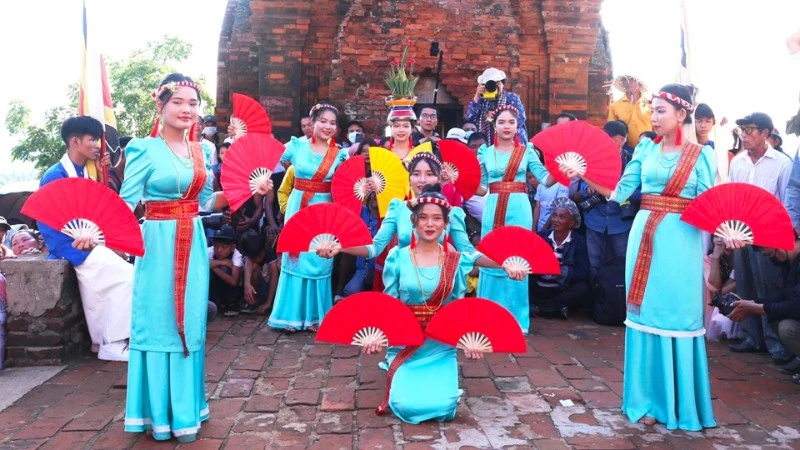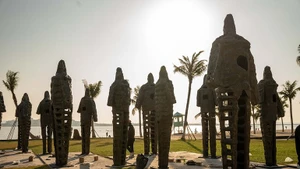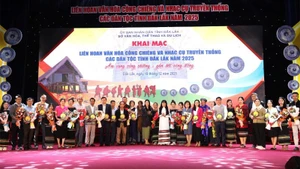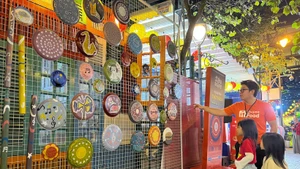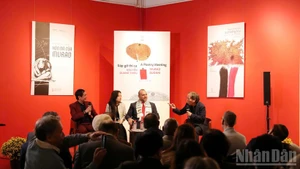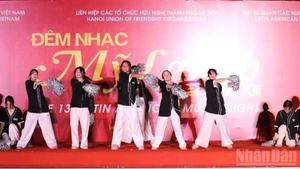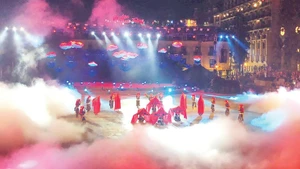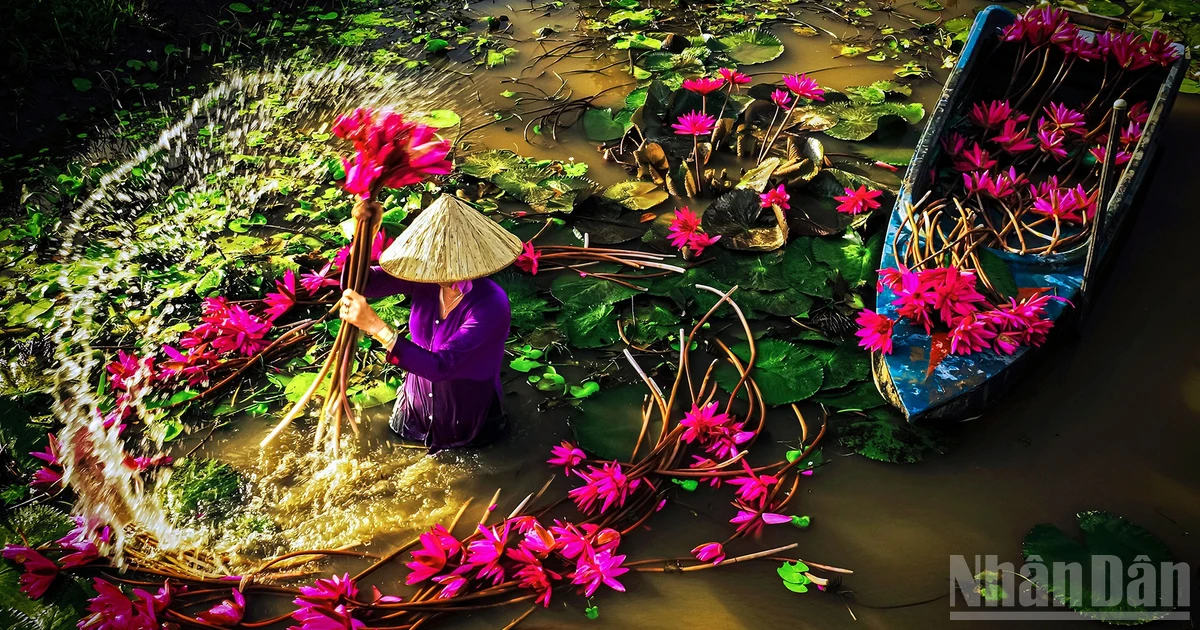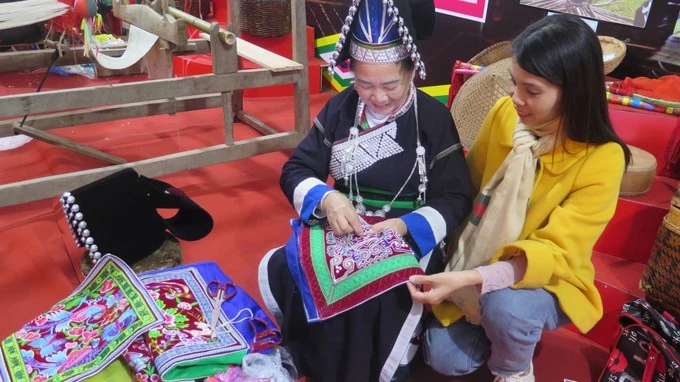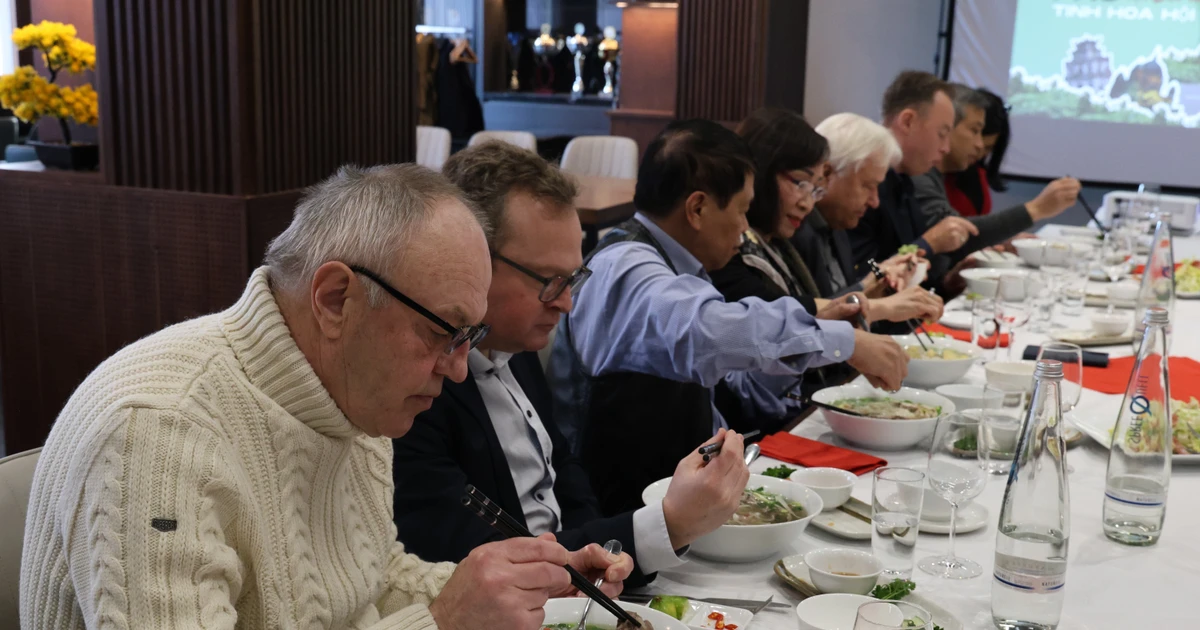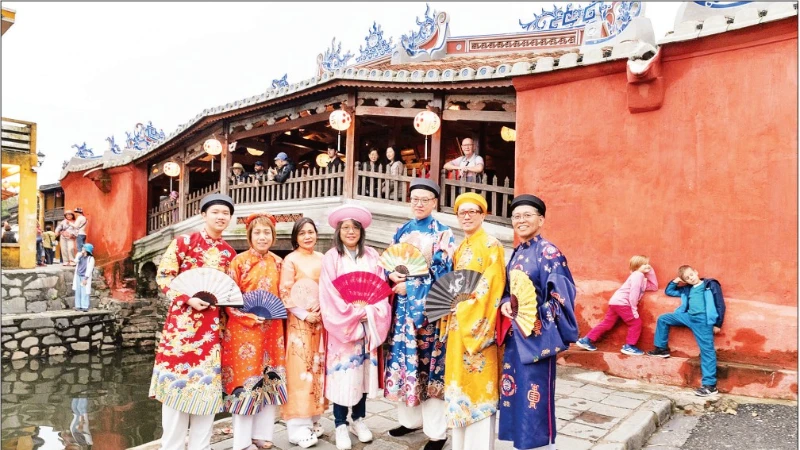Resolution No. 01-NQ/TU (dated July 14, 2025), issued by the Khanh Hoa Provincial Party Committee on achieving double-digit economic growth in the 2025–2030 period, identifies tourism services as one of the four key pillars of development.
The province has set a target of welcoming 20.5 million domestic and international visitors by 2030, with tourism contributing 15% of GRDP and 20% of total local budget revenue.
A rich treasury of Cham cultural heritage
Khanh Hoa is a land of diversity, a place of long-standing cultural intersection from mountains, plains to seas and islands, where Cham, Raglai, Kinh, and other ethnic communities have created a vibrant and multi-hued cultural treasury.
According to Nguyen Van Hoa, Director of the Khanh Hoa Department of Culture, Sports and Tourism, the province has 257 recognised cultural heritages, including three intangible cultural heritages inscribed by UNESCO: the art of Don ca tai tu in southern Viet Nam, Bai Choi singing, and the traditional pottery-making art of the Cham people.
In addition, there are three special national relics: Ponagar Tower, Po Klong Garai Tower, and Hoa Lai Tower; five national treasures; and 33 nationally ranked historical, cultural, and scenic sites.
Khanh Hoa Province has 257 recognised cultural heritages, including three UNESCO-inscribed intangible cultural heritages: the art of Don ca tai tu in southern Viet Nam, Bai Choi singing, and the traditional pottery-making art of the Cham people.
Ancient temple towers preserved in their original state, Katê Festival, and Via Ba Festival all hold exceptional historical, cultural, and artistic value, contributing to the richness of Cham cultural heritage in particular and Vietnamese culture in general. They have attracted numerous researchers and millions of domestic and international visitors to come and experience them.
Kate Festival was recognised by the Ministry of Culture, Sports and Tourism as a National Intangible Cultural Heritage in June 2017. Ponagar Tower was granted the title of Special National Relic in July 2025, and Ponagar Tower Festival was also recognised as a National Intangible Cultural Heritage. These honours acknowledge and affirm the unique architectural and artistic values of the ancient Cham culture, deeply tied to the spiritual life of the ethnic communities in Khanh Hoa.
Today, major annual festivals such as Katê Festival, held at Po Klong Garai Tower in Do Vinh Ward, in commemoration of a king who greatly contributed to land reclamation, irrigation and improving people’s livelihoods; and the Via Ba Festival at Ponagar Tower by the Cai River and Nha Trang Bay, held in memory of the Holy Mother Thien Y Ana — revered by the Cham as the Mother of the Land — are no longer confined to the Cham community, but have become occasions of shared joy for all ethnic groups.
At the foot of the towers, festival-goers express reverence and gratitude to the deities, praying for favourable weather, bountiful harvests, health, peace and prosperity in a solemn atmosphere.
After the rituals at the temple towers, community and family festivities follow, featuring vibrant Cham cultural performances in music and sports, attracting millions of visitors. They come to celebrate and admire Cham girls dressed in graceful traditional costumes, dancing to folk melodies accompanied by the resonant sounds of ginang and paranung drums and the saranai oboe, in celebrations that last multiple days.
Tran Thi Ngoc Luyen, a visitor from Dong Nai Province, shared: “For more than 10 years, I have come to Khanh Hoa during the Katê and Via Ba festivals. I truly enjoy the beautiful scenery, the hospitality and friendliness of the local people. The architecture of Po Klong Garai Tower, Ponagar Tower, ginang drums, and the ancient Cham temples are unique. Though they have stood for centuries, their shape and colours remain almost fully intact, leaving a deep impression on me.”
Much potential for tourism development
Nguyen Long Bien, Vice Chairman of Khanh Hoa Provincial People’s Committee, said: “The province has approved a project for preserving and promoting the value of the Katê Festival of the Cham people for the 2025–2030 period, with an investment of more than 10 billion VND. This aims to safeguard rituals, ceremonies and performing arts associated with the festival; support the maintenance of traditional craft villages serving the festival; and integrate festival content into school programmes and tourism activities, thereby promoting cultural heritage values to serve tourism development and contribute to the province’s rapid and sustainable growth.”
The province has approved a project for preserving and promoting the value of the Cham people’s Kate Festival in the 2025–2030 period, with an investment of more than 10 billion dong. This aims to safeguard rituals, ceremonies and performing arts associated with the festival; support the maintenance of traditional craft villages serving the festival; and integrate festival content into school programmes and tourism activities, thereby promoting cultural heritage values to serve tourism development and contribute to the province’s rapid and sustainable growth.
Nguyen Long Bien, Vice Chairman of Khanh Hoa Provincial People’s Committee.
In recent years, the traditional pottery village of Bau Truc in Ninh Phuoc Commune has welcomed 500–700 visitors per day; during summer and holidays, the number doubles or triples. This has increasingly fostered tourism development in conjunction with preserving the traditional Cham craft village.
Phu Huu Minh Thuan, Director of the Bau Truc Cham Pottery Cooperative, said with delight: “In 2022, the Cham pottery-making art was inscribed by UNESCO on the List of Intangible Cultural Heritage in Need of Urgent Safeguarding. This is not only a great source of pride, but also motivation for locals to be more creative, producing higher-quality products that meet consumer demand at home and abroad. At present, the income of workers in the village ranges from 6–8 million VND per person per month, and their lives have improved considerably.”
It can be said that throughout history, the ethnic communities in Khanh Hoa have together created cultural values rich in identity and humanity. Today, culture has become an invaluable asset, an indispensable driver and component for the province’s sustainable development.
With a geographical space stretching from Dai Lanh Beach to Ca Na, spanning from the East Sea/South China Sea to the Central Highlands, and with its system of registered and ranked relics showcasing distinctive cultural, historical, scientific, architectural and artistic values, Khanh Hoa holds much potential for tourism development. It is believed that the province will soon rise to a new position, becoming a prominent destination in the South Central Coast region.
